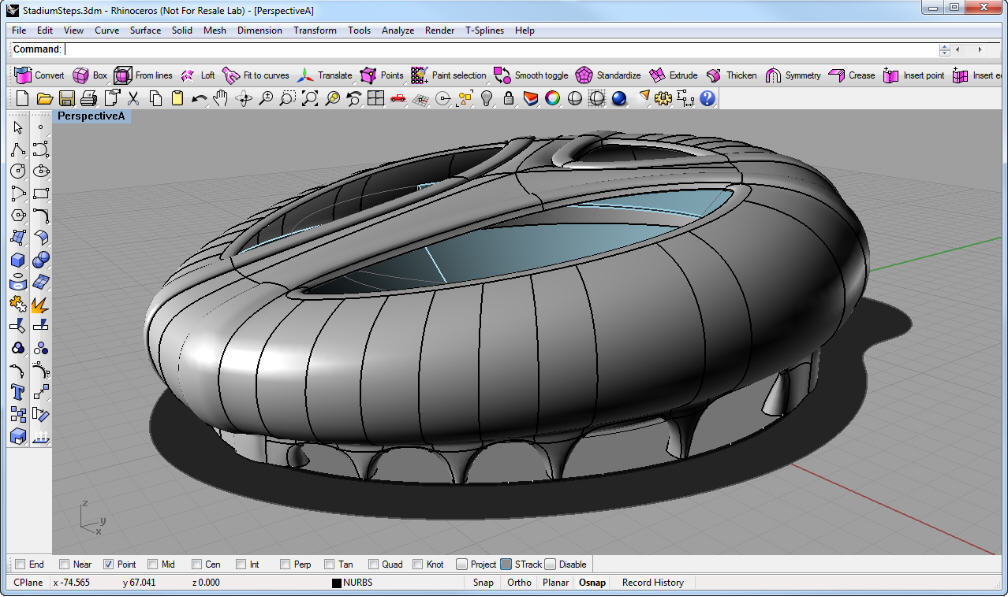
Macros allow quick and easy selection of logical groups of surface points.Ĭase studies & tutorialsT-Splines introduces exciting new polygonal modeling workflows into Rhino. Manipulator: fully control the extent and direction of extrusions of individual or groups of points and edges.Control points: Add control points anywhere on the surface.Local detail: Create local detail in a surface with no need to extend the detail across the whole surface.Extrude shapes: Modify your model by adding geometry and dragging faces, edges, or vertices.Box modeling can begin from a single primitive, like a cube, or by deriving a T-Spline model from polylines. T-Spines makes this technique available for the first time in a NURBS compatible method.

And, for the first time, T-Splines makes them available in a NURBS-compatible, production quality way.īox modeling toolsBox modeling or polygonal modeling is a method where the designer pushes or pulls on and extrudes basic shapes to quickly rough out a desired form. These workflows, enjoyed for their rapid concept generation by animators, bring the same speed benefit to industrial design. The power and ease of subdivision modeling with the precision of NURBST-Splines introduces new subdivision surface type workflows into Rhino's precision environment. Learn more about how T-Splines can help you in your industry. T-Splines is the Rhino plugin that will speed up your time for free-form, organic modeling. Learn more about the basics of box modeling.Already a master in 3D? T-Splines provides an alternative: pushing and pulling on a surface to shape it and add form. It can be daunting to learn the intricacies of NURBS modeling. T-Splines surfaces are 100 percent directionally compatible with NURBS and at any point in the design, you can convert your T-Splines model to a NURBS model for downstream analysis or manufacturing applications. obj files and convert them to T-Splines surfaces. Interoperability: Import polygonal models or.Editing these points, deleting sections of points, and adding local creases are possible, too. T-Splines makes this easy to do, by letting you insert single control points instead of a whole row, as required in NURBS. High level of shape control: Keeping the number of control points to a minimum (to facilitate a smooth surface) is the first rule of modeling.Powerful surfacing tools: Using simple T-Splines commands, it’s easy to generate editable, non-rectangular surfaces from curves-something that’s not possible to do using NURBS.As the model becomes more refined, sections of the shape can be subdivided to add more detail and control. New modeling technique: Polygonal or Box modeling is a method where the designer pulls on, extrudes, and scales basic shapes to quickly rough out a desired shape.Dan Falvey, tools4designProduct features With this speed I can underbid larger companies and still make the same profit I made 5 years ago. That means I could pump out 10 to 15 design iterations in a day, and more quickly converge on the final design with my client.

The reason I am excited about T-Splines is that it’s increasingly difficult to bid competitively for design jobs in the past few years as off-shore design agencies have been driving margins down.Ī recent design project that would have typically been a 3 to 4 hour modeling job for me took only 20 minutes with T-Splines.

Create production-ready designs: T-Splines surfaces are ready for analysis and manufacturing.Be more competitive: Cycle through more design iterations in less time and respond faster to design bids.



 0 kommentar(er)
0 kommentar(er)
